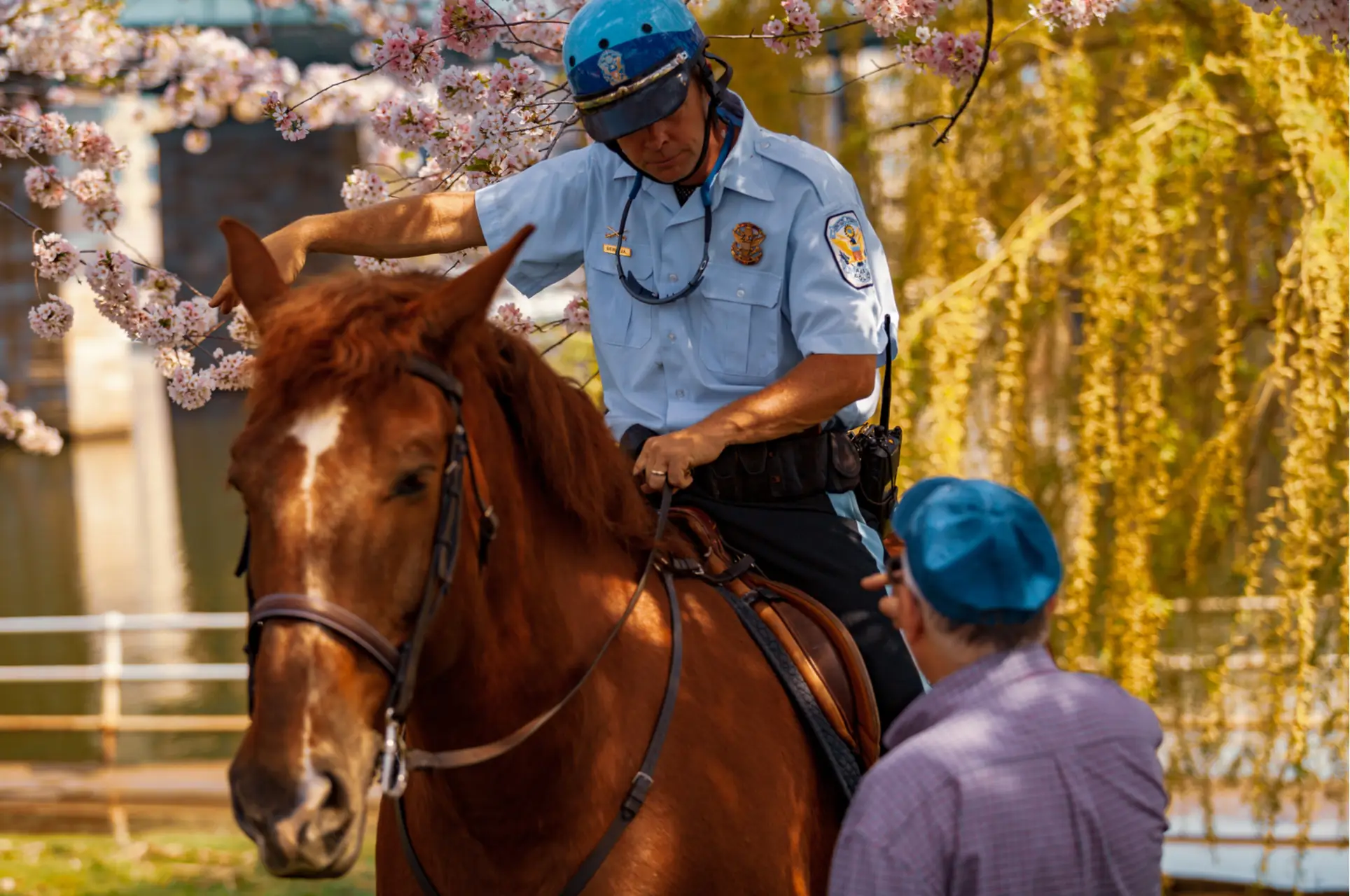Long before motorized vehicles, freeways and speed-measuring devices, people used to ride horses to their destinations, and law enforcement officers were no exception.
Just a few centuries ago, travel between towns often involved braving some treacherous terrain, and officers upholding the law very often took to their horses on some dangerous journeys. Even to this day, it may be surprising to hear that police cavalry are still serving in mounted units in every corner of the world.
These ‘Ten Foot Cops’ have many advantages and can move through crowds with ease while boasting a line of sight not afforded to officers on foot. Similarly, officers have described how members of the public are more trusting of police on horseback, with children often asking them questions in a manner they may not have with an officer driving a vehicle.
Keeping Watch Over France
In the early 18th century, the French military used fully mounted units to traverse the vast countryside of Early Modern France. While the streets of Paris were patrolled (often unsuccessfully) by teams of watchmen, roving bands of horse riders lived on the move, forbidden from remaining in one place for more than two days as they hunted down criminals.

Although they were originally not united under a single name, they sometimes bore the title of ‘maréchaussée’, and are considered to be the first mounted police force. After the French Revolution, the mounted unit persevered and became the ‘gendarmerie’, as it is known in France today.
Crossing the British Channel
It took time for Britain to have a mounted police force like the French Maréchaussée; British citizens viewed militaristic units galloping through the land as a threat to their liberty. Nonetheless, 1758 saw the formation of the Bow Road Horse Patrol, the earliest branch of what is now known in the UK as the Metropolitan Police. They patrolled the fringes of the city during a time when London was only a small fraction of the size it is today.
Now, the patrol exists as the Metropolitan Mounted Police Force and is well known throughout London, instantly recognizable at large-scale events such as football matches or marches. The Metropolitan Mounted Police Force is also heavily connected to the British royal family, and is always in attendance during the Changing of the Guard at Buckingham Palace alongside escorting members of the Royal Family as they attend public events. These roles have cemented the Mounted Police as both a ceremonial and official symbol of authority.
Moving to a Mounted America

The Boston Police Department boasted the very first mounted police officer in the United States. Building on their success, they hired a further 27 officers on horseback the following year, thus creating the nation’s original mounted police force.
Today, many cities that still employ mounted units have been forced to downsize considerably. But if you are walking through cities like New York, you’ll sometimes catch sight of officers on horseback, especially in Central Park. And in 2011, the Philadelphia Police Department revived their mounted police force.
Where the mounted units still truly thrive in the USA is in the grand rolling vistas of national parks across the country. The United States Park Police Horse Mounted Patrol was founded in 1934 with a single horse rented from a local stable. This number grew incrementally and considerably as the operation’s success soon became clear.
The Park Police themselves cite Rock Creek Park in Washington as a great example of their effectiveness; spanning over 1900 acres, the terrain is heavily wooded and threaded with equestrian trails found too difficult to patrol for officers on foot or in motorized vehicles. When the mounted units proved successful, they expanded into other parks with wide, open spaces such as picnic areas and ball fields. Indeed, a horse galloping against the backdrop of Yosemite National Park is far more picturesque than a police car disturbing natural surroundings.
Riding Into the Great White North

Of course, what would a glimpse into the legacy of mounted police be without taking into account the most famous mounted law enforcement unit in the world, the Royal Canadian Mounted Police (RCMP)? Commonly known today as ‘Mounties’, the RCMP was founded in 1873 as the ‘North West Mounted Rifles.’ However, after citizens of the United States were unnerved by this menacing name, the force was later renamed as the ‘North West Mounted Police’.
The initial force was composed of 300 men scouring the wilderness for smugglers and illegal traders across 300,000 square miles. The unit was also responsible for peacekeeping during the western expansion of the Canadian Pacific Railway, and saved thousands of lives during the 1898 Gold Rush, offering aid to new settlers in Canada who had little to no experience surviving in the wilderness.
Today, the RCMP total more than 30,000 members and enforce community, territorial, and federal law from the West Coast to the East Coast, and from the North Coast to the southern border with the USA.
It is clear that in recent history, there has been a precipitous decline in the use of cavalry in law enforcement operations. But it is possible that, in the future, more cities will follow in the footsteps of the Philadelphia Police Department in reinstating their mounted units. Whatever the future may hold, the legacy of the mounted police unit will remain unforgettable for generations to come.

